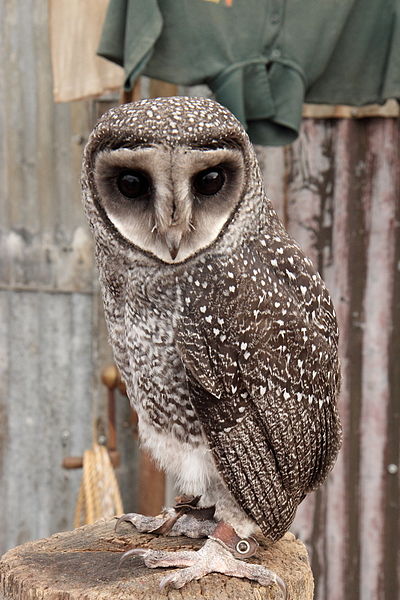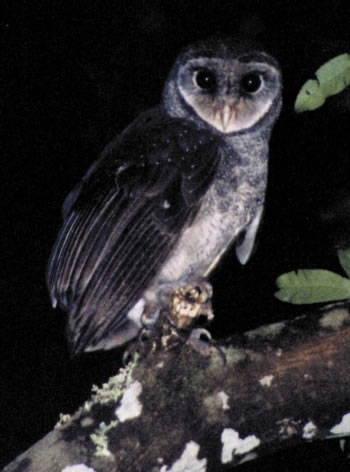Colours
Distinguishing features
The large dark eyes are set in a round large facial disk. The facial disk is dark gray-silver or sooty black (changing with age) and has a heavy black edge. The upper part of the owl is black to dark gray and the under part is lighter. The tail is short and the legs are feathered. The feet and talons are large. (Wikipedia)
Size
- From 37 cm to 43 cm (Length of specimen) - applies to Females
- From 37 cm to 43 cm (Length of specimen) - applies to Males
Wingspan
- From 60 cm to 90 cm
Synonyms
Similar taxa
-
Animalia:
Lesser Sooty Owl (species: Tyto (Tyto) multipunctata)
The Lesser Sooty Owl is much smaller than the Sooty Owl.
Distribution
Distribution and habitat preferences
They are found in south-eastern Australia, Montane rainforests of New Guinea and have been seen on Flinders Island in the Bass Strait.
Rarely seen or heard, they can be found in areas with deep gullies in moist forests, where smooth-barked gum trees, tree ferns and wet forest under-storey are present. They may hunt in drier areas but usually roost and breed in the moister areas. (Wikipedia)
Diet
Mammals ranging from large arboreal marsupials such as the Greater Glider, through Ringtail Possums and Sugar Gliders to bandicoots, rodents and antechinus comprise the most common items in the Sooty Owl diet. They also occasionally take birds, bats and insects. (Wikipedia)



